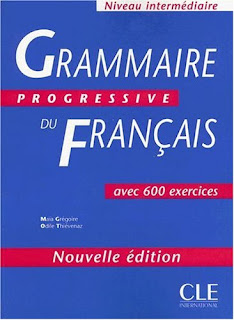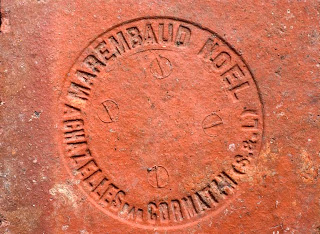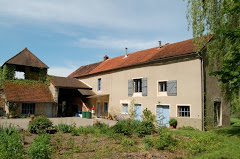The website of La Tuilerie de ChazelleBlog of La Tuilerie de Chazelle by SueLast year July I was admitted to a French hospital.

The reason for this little escapade was as trivial as it was strange; it started all of with what seemed to be a heavy allergic reaction to an insect bite. I was rushed off to the Intensive Care in Mâcon, where they found out that my heart rhythm was far too slow. By then nobody worried about the insect bite anymore! Because the surgeon in Mâcon was enjoying himself on a beach somewhere, I was rushed off again to the Hospital in Chalon-sur-Saône. Within a week I left the hospital, this time in the possession of a brand new pacemaker. The first check-up was very satisfactory, and life went on as usual.
In January however, a little red spot developed where the scar of the operation was, and a couple of weeks later there was a hole in the skin which clearly showed my pacemaker. A hole with a view…. Half an hour after I had seen my GP I was back in the Intensive Care in Chalon, where the nurses still recognised and remembered me, most likely as the slightly eccentric foreigner with an unpronounceable name, who made a real codswallop of their language. However, this time it was not for less than a week. I stayed there a full three weeks, which is a very long time, even considering the beautiful view I had from my room on the Cathedral in Chalon.

Health care in France is well organised. Everything centres around your Carte Vitale (Health Insurance CPAM). The GP scans it, you pay € 22, and a couple of weeks later the € 22 are in your bank account again. At the pharmacist you do not pay at all; that money is settled directly between the pharmacy and CPAM. The same applies to the hospital. I (luckily!) never saw one bill from them. After hearing all the horror stories about NHS in the UK and the changes in Health Care in the Netherlands, I must say that the French are very efficient. There is plenty of staff around, you can’t get away with not eating, and even a guy who was hanging out of the toilet window (it was big enough to sit in, hence not one of these small hole-in-the-wall things) to smoke a fag, was found out almost immediately and discharged very quickly. It is also interesting to see how important food is in France. In my case the old pacemaker had to be removed first; the two weeks after the removal I had to be on antibiotics before the new pacemaker was installed. The morning before the first operation the surgeon walked in to tell me I was going to be operated on around lunch time. I had not been not allowed to eat from midnight until after the operation.

Finally, at around 18h00 the surgeon walked in again to tell me that they had rather a lot of emergencies that day, but that I would be operated on around 19h00. Approx. 20h00 I went to the theatre, and at 21h30 I was back on the ward again. At 22h00 the surgeon nipped in, asked me whether I was hungry, and asked a nurse to organise a cup of soup, some meat and some bread for me.
The second operation was performed in time. I went to the theatre at 9h00, and was back on the ward at 10h30, quite hungry as well. When I asked for something to eat, the nurse looked at me as if I came from a different planet. It appeared, that one was not supposed to eat at all until 2 hours after the operation. Obviously the nurses were in this case more familiar with procedures than the surgeon….
Despite having lived here for over four years now, despite not having satellite TV, hence only “watching” TV1, TV2 and TV3, and despite having had French lessons with a 100% French teacher, I would not dare to say that I speak the lingo fluently.
However, the communication with the nurses and doctors went very well, not in the least thanks to the patience of the French staff. But sometimes one cocks things up….
Whilst I was attached to a monitor and to several bags full of antibiotics, I had to ask for facilities to go to the toilet. But how do you ask for those sensitive things in French? To go for a pee I picked up quickly, because I heard other people say it. “Faire pipi” sounded a bit childish to me, but so be it. But how does one asks for the facilities “to do one’s business”?

The dictionary would be my saviour in this case, at least, that was what I hoped for. I had a choice of two words; “(child.) faire caca” or “(pop.) chier”. Who would use children’s language, when popular words are available? When I told the nurse that I would not mind to “chier”, she did not blink an eye, but made it very clear that I should have used the verb “faire caca”. My room mate on the other hand was in stitches. When my wife brought in a proper dictionary the next day, the verb “chier” had changed status, from popular to vulgar!
The other thing my wife managed to get hold of, was a list with “hospital and doctor related phrases”, from the Internet.
In bed I was wearing one of these green hospital gowns. I needed a clean one, and with my newly acquired list, I was able to say to the nurse: “Je voudrai une casaque propre.” There were two of them in the room; one was in stitches, but the other one asked, without betting an eyelid: “What time is the race, and what is your number?’. The better dictionary solved this riddle; I had asked for a jockey’s coat!
The moral of this story: Do not believe everything you find on the internet, and when you have to go into a foreign hospital, do not forget to take reliable dictionaries with you!
 In the nearby village Ameugny there is a tiny little shop selling “elf” related stuff, such as postcards with elves on them, plastic elves, terracotta elves, bakelite elves, etc. Look at the website
In the nearby village Ameugny there is a tiny little shop selling “elf” related stuff, such as postcards with elves on them, plastic elves, terracotta elves, bakelite elves, etc. Look at the website






















